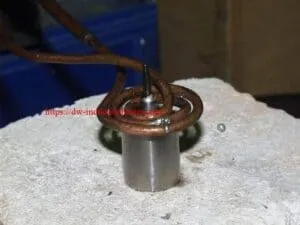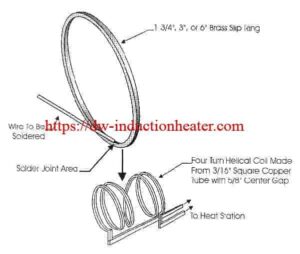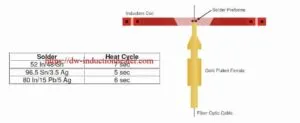Induction Soldering Stainless Steel Tubing with IGBT Soldering Heating Units
Objective Heat a.125” (3.175mm) diameter stainless steel tube to a 1” diameter cylinder 1” (25.4mm) tall for a soldering application
Material Stainless steel cylinder and tube
Temperature indicating paint
Lead free solder preform rings
Temperature 300-400 ºF (150-205 ºC)
Frequency 235 kHz
Equipment DW-UHF-4.5 kW, 150-400 kHz induction power supply, equipped with a remote heat station containing two 0.66 μF capacitors (total 1.32 μF).
A three-turn pancake coil induction heating coil designed and developed specifically for this application.
Process Initial tests without solder ensured that the metal reaches the required temperature and the heating pattern on the part.Solder preform rings are placed onto the tube at the joint. The part is placed inside the induction-heating coil heated until the solder melts.
Results/Benefits Programmable and adjustable heating ramp rates achieve the desired heat profile. Too fast a heat profile does not conduct the heat through the joint and too slow a heat cycle vaporizes
or dries the flux causing poor solder flow.










